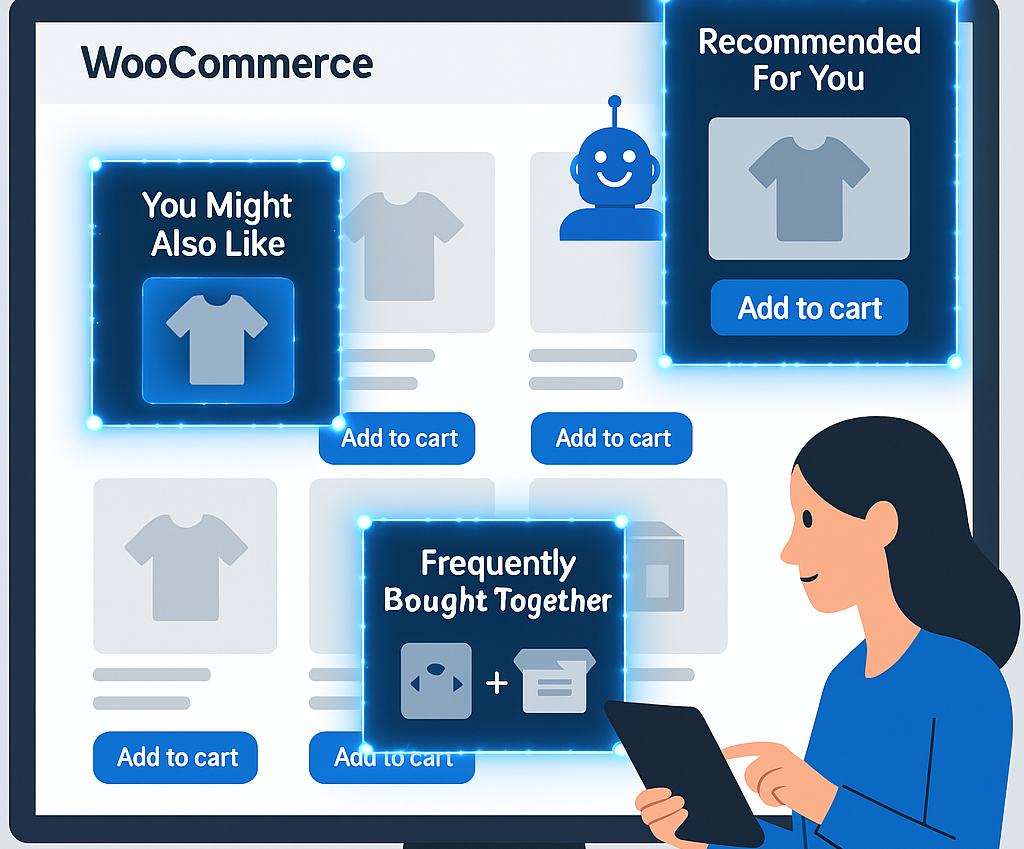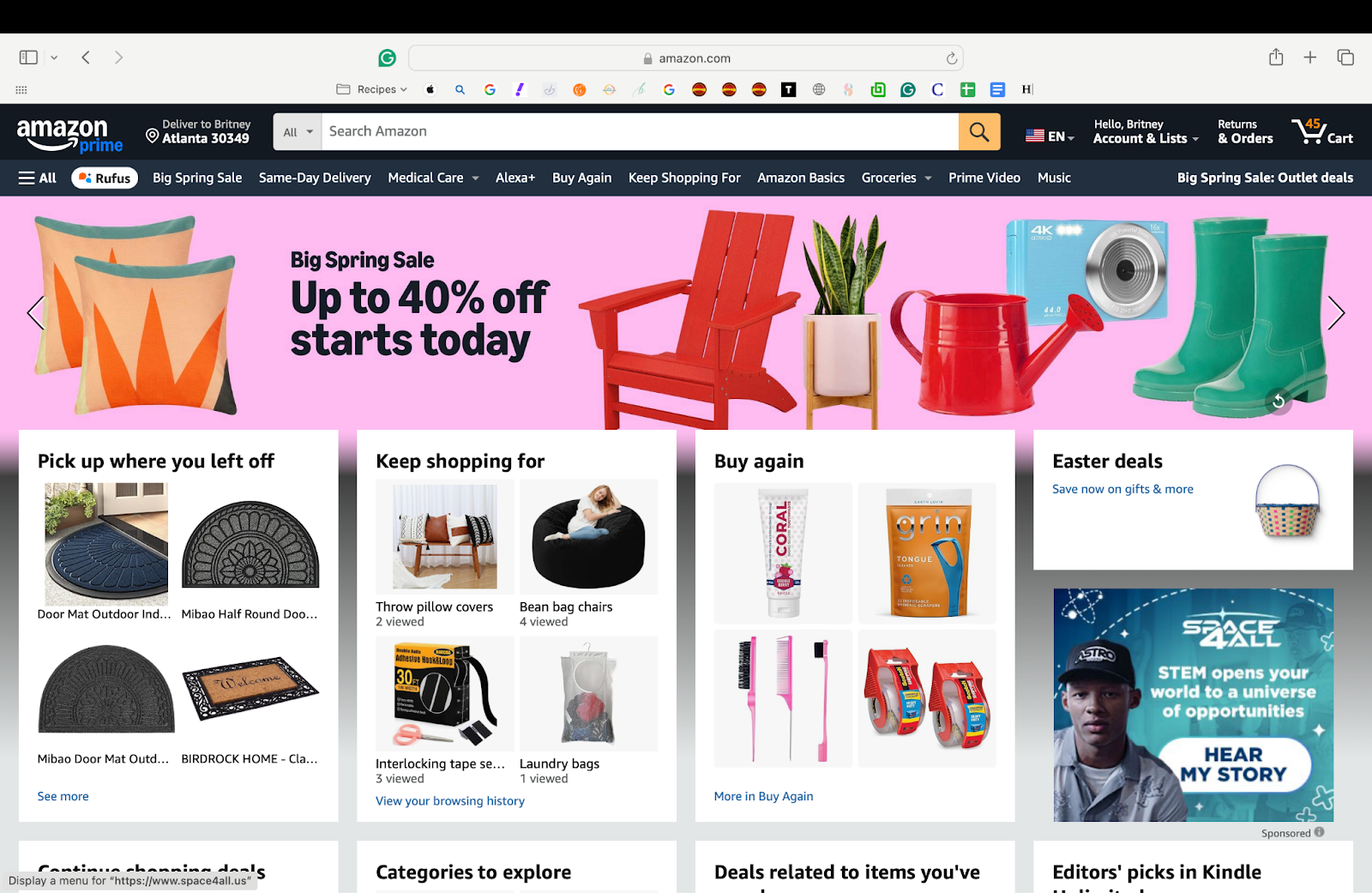How to Implement AI-Powered Product Recommendations in WooCommerce Themes
About 28% of top Ecommerce brands use some form of artificial intelligence and machine learning in their operations.
Recommendation engines are one of the most common applications. These tools help businesses personalize customer experiences, increase conversions, and improve product offerings based on user behavior and preferences.
Amazon has been doing this for years. But you don’t have to be a tech giant to use the same strategies. It’s all possible with a WooCommerce theme.
In this blog, you’ll learn how to add AI-powered product recommendations to your store to start personalizing every step of the buying experience.
What Are AI-Powered Product Recommendations?
Have you ever shopped online? The product suggestions that seem to know exactly what you want aren’t a coincidence. AI-powered product recommendations are the result of complex algorithms that analyze your behavior and preferences.
These systems track everything from what you’ve clicked on to how long you’ve spent browsing certain categories. Then, they use that data to predict what you might like next.
If you run an Ecommerce website, AI product recommendations can be a great tool to add to your marketing strategy.
You don’t have to rely on broad static suggestions that don’t suit different customer needs and preferences. You can deliver personalized recommendations that feel relevant and timely, as Amazon does in the screenshot below.
Amazon recommends products using different categories: “Pick up where you left off,” “Keep shopping for,” and “Buy again”.
Looking at the recommendations, you can tell the customer frequently shops for home and personal care items.
So, Amazon’s recommendation engine shows the customers products they’re more likely to buy or re-purchase.
How You Can Personalize the Customer Experience With WooCommerce Product Recommendations
Personalizing the customer experience (CX) in your WooCommerce store makes shopping more seamless, frictionless, and relevant.
When a shopper sees products they’re actually interested in, their chances of buying go up. And when these suggestions are based on real-time behavior, it feels more natural than static lists of “recommended products”.
Every recommendation has an opportunity to turn a browsing session into a transaction. And your WooCommerce store has the tools to make it happen.
Implementing AI-powered product recommendations in WooCommerce themes requires more than just algorithms. It relies on high-quality, real-time customer data to deliver accurate, relevant, and personalized shopping experiences.
By leveraging AI-driven marketing strategies, you can optimize recommendations based on behavioral insights. This is particularly essential in the context of marketplace app development, where understanding user preferences can significantly enhance the overall shopping experience.
That way, your customers see products that truly match their preferences. This approach enhances engagement, conversion rates, customer satisfaction, and retention. AI-powered insights enable your brand to refine your personalization strategies, which leads to more precise and effective product recommendations.
So, in a nutshell, AI product recommendations can:
- Increase conversion rates: Personalized recommendations are tailored to a customer’s interests. This makes them more likely to complete a purchase.
- Increase average order value (AOV): By suggesting complementary or high-value items, you can encourage customers to add more to their cart. This boosts the overall order value. 80% of businesses report increased consumer spending when their experiences are personalized.
- Improve customer retention: When customers see relevant products, they feel like you understand them and care about their needs. This can lead to repeat visits and build brand loyalty over time.
- Enhance CX: Personalized recommendations create a more streamlined and enjoyable shopping journey. As a result, it helps reduce decision fatigue. And customers can find what they want faster.
- Reduce bounce rates: Showing customers products they’re likely to be interested in allows you to keep them engaged and on your site longer. This reduces the chance they’ll leave without making a purchase.
4 Steps to Implement AI-Powered Product Recommendations in Your WooCommerce Theme
To successfully implement AI product recommendations in your WooCommerce theme, you need the right technology that will work seamlessly with your store.
These steps will guide you through choosing the best WordPress plugin, configuring it to match your business needs, and optimizing it for maximum impact.
By the end, you’ll have a fully functional recommendation system that can personalize the shopping experience for every visitor, increase conversions, and boost customer satisfaction.
1. Choose an AI Recommendation Plugin for WooCommerce
A plugin is a piece of software that adds specific features or functionality to your WooCommerce website. It’s like an add-on that enhances the capabilities of your site without requiring you to rewrite any of your site’s code. With that in mind, many businesses rely on AdTribes to manage and optimize their plugin integrations efficiently.
When you install a plugin, it integrates seamlessly with your site to give you new features. In this case, that new feature is AI product recommendations.
When searching for the right plugin, consider tools that analyze customer behavior, suggest products in real-time, and fit well with the look and feel of your theme.
Some popular options include WooCommerce Product Recommendations and WPSolr.
They offer AI-driven suggestions based on what your customers are browsing and buying. Take your time to explore the customization options so the recommendations feel like a natural part of your store.
2. Install and Configure the Plugin
Once you’ve chosen the right plugin, the next step is to install it and set it up.
Here’s how to do it:
- Go to your WordPress dashboard and navigate to Plugins > Add New. Search for the plugin you chose. If it’s a premium plugin, you’ll need to upload the ZIP file you received after purchase.
- Click Install Now. Then, Activate once installation is complete.
- Now, connect the plugin to your WooCommerce store. Some plugins may require an API key or account setup with their service provider. Follow the plugin’s setup wizard to complete this step.
3. Integrate Recommendations into Your Theme
Got your plugin installed and configured? Now, for the fun part. You get to finally implement the recommendations engine.
Here are some tips:
- Identify the best placement for recommendations: Where you position recommendations can impact how effective they are. Your plugin may have built-in settings for placements. Or you might need to adjust where recommendations appear in your theme. Common placements include:
- Product pages: Show related or complementary products.
- Cart and checkout pages: Suggest last-minute add-ons.
- Homepage: Highlight trending or personalized picks.
- Category pages: Feature bestsellers or items customers frequently buy together.
-
- Use widgets or shortcodes: Many WooCommerce recommendation plugins provide widgets or shortcodes that let you place recommendations anywhere your theme allows. If your plugin includes widgets, you can add them through Appearance > Widgets in WordPress. For shortcodes, paste them into the appropriate page templates or blocks.
- Modify theme files for custom placement: Want more control? You may need to edit your theme files. This requires a basic understanding of PHP and WooCommerce hooks. For example, if you want to insert recommendations below the product description, you could modify your single-product.php file. Refer to your plugin’s documentation to find the right hooks to use for custom placements.
- Match the design to your store: Your recommendations should look like they belong on your site. Adjust fonts, colors, and spacing to align with your theme’s style. Some plugins have built-in customization options, while others may require CSS tweaks.
- Test across devices: Make sure recommendations display properly on desktops, tablets, and mobile devices. Responsive admin dashboards are critical . Close to 50% of online shoppers use their mobile devices to check and compare prices before making a purchase. So, if something looks off, adjust the CSS. Or, check if your plugin has mobile-friendly settings.
4. Track Results and Improve Performance
Are your AI-powered recommendations live? Your work still isn’t over. You need to know if they’re actually driving sales, increasing engagement, and improving CX.
How do you track results to see what’s working and what needs to change?
- Use built-in analytics: Most AI recommendation plugins come with reporting features that show clicks, conversions, and revenue generated by recommended products. Check these reports regularly to spot trends.
- Monitor WooCommerce sales data: WooCommerce has built-in reports under WooCommerce > Reports. You can track overall sales, product performance, and customer behavior. Compare sales data before and after implementing recommendations to see if there’s an improvement.
- Analyze customer behavior: Use heat maps, session recordings, or Google Analytics to see how customers interact with recommendations. Are they clicking? Are they ignoring them? If engagement is low, try changing the placement or styling.
- A/B test different approaches: Test different recommendation strategies to find out what converts best. Try:
-
- Changing the location of recommendations (e.g., homepage vs. product pages)
- Displaying different types of recommendations (e.g., “Frequently Bought Together” vs. “Trending Now”)
- Adjusting the design to make recommendations stand out more
Conclusion
AI-powered product recommendations directly impact how customers interact with your store, what they buy, and whether they come back. Getting them set up in WooCommerce takes some effort. But once everything is running, the results are well worth it.
Plus, product recommendations will get better over time as they learn from customer behavior. However, they still need manual fine-tuning. Regularly review analytics, make adjustments, and keep refining your strategy to maximize performance.
About the author: Britney Steele
Born and raised in Atlanta, Britney is a freelance writer with 5+ years of experience. She has written for a variety of industries, including marketing, technology, business, finance, healthcare, wellness, and fitness. If she’s not spending her time chasing after three little humans and two four-legged friends, you can almost always find her glued to a book or awesome TV series.





Leave a Reply